Early Graphic Communication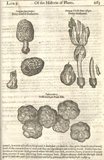
Egyptians were writing and drawing with ink on papyrus around 3,000 BC. They wrote on clay tablets which were cumbersome and heavy. Broken pieces of pottery, tablets of wax, and even pieces of wood were used for informal notes, but papyrus was the earliest form of an easily transportable printing base. Growing prolifically in Egypt but difficult to grow elsewhere, papyrus stalks were cut and laid side by side, with another layer laid on top at right angles to the bottom layer. They were soaked in water, then pounded to mesh them together, and the sheets of papyrus were spread in the sun to dry. By 1,000 BC Egyptian papyrus sheets were sold throughout Western Asia and the Mediterranean regions of Greece and Rome. A sheet of papyrus cost today's equivalent of $20! To make larger sheets small papyrus sheets were joined with animal glue.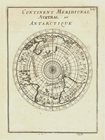
Papyrus or Parchment..
Around 150 BC, some say to protect the superiority of his own library, the Pharaoh Ptolemy V of Egypt refused to sell any more papyrus to King Eumenes II of Pergamum (later, Pergamon) in Western Asia, so like others living east of the Mediterranean, Eumenes made parchment scrolls from animal skins of sheep and goats instead. Vellum (from veal and the French word veau) refers to skins from young calves. skins were soaked in lime to aid the removal of hair and fat, then scraped thin and soaked in water, before being stretched to dry. The surface was rubbed with pumice, chalk or salt to prepare it for writing. (In the 17th century the surface was thinly coated with opaque white to create a bright smooth surface for watercolour painting.)
The disadvantage of parchment was that it only came as large as the animal, and animal skins were difficult to glue together for a longer scroll. Although they were less fragile than papyrus, parchment scrolls were heavier, more expensive, and harder to use. Buddhists did not use parchment because it was made from the skins of dead animals, so both papyrus and parchment were used, until the Chinese invented paper. By the 13th century the manufacture of papyrus had ceased.
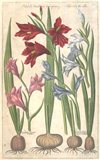 Invention of Paper
Invention of Paper
Early writings in China were on tablets of bamboo or on pieces of silk called chih, but silk was expensive and bamboo tablets were heavy. Cloth made from mulberry bark was common in China during the Han dynasty when a court eunuch, government official, Cai Lun (Tshai Lun), was credited with inventing paper. Finely-chopped mulberry tree bark, hemp remnants, rags of cloth and fishing nets were mixed with water, mashed flat, drained of water, and dried in the sun. In 105 AD a paper-making industry was established in China. Zhi, the Chinese word for paper, was defined in an early Chinese dictionary as “a mat of refuse fibres”.
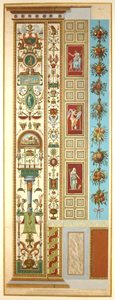 The earliest known woodblocks were used for printing fabric in China. By 650 AD Buddhist monks were making multiple copies of prayers by printing them from woodblocks onto paper which was less expensive, more readily available, and easier to transport. As the image or writing remained on the surface of papyrus and could be erased or changed, the Egyptians preferred to use paper which soaked up the ink and retained the image.
The earliest known woodblocks were used for printing fabric in China. By 650 AD Buddhist monks were making multiple copies of prayers by printing them from woodblocks onto paper which was less expensive, more readily available, and easier to transport. As the image or writing remained on the surface of papyrus and could be erased or changed, the Egyptians preferred to use paper which soaked up the ink and retained the image. 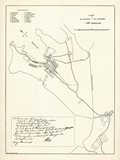 The manufacture of paper spread throughout the world after travelling merchants bought paper in China and Central Asia and took it back to their own countries. Muslim merchants sold paper in India and the Mediterranean regions.
The manufacture of paper spread throughout the world after travelling merchants bought paper in China and Central Asia and took it back to their own countries. Muslim merchants sold paper in India and the Mediterranean regions.
Between 600 and 1500 AD different paper-making technologies used different raw materials, but basically the manufacture of paper requires only cellulose (extracted from plants or textile waste) which is then cleaned, soaked, fermented or cooked with fresh water to break down the fibres, and thinned out on a porous screen to drain and dry – preferably in the sun to bleach the pulp while the cellulose fibres meld to strengthen the paper. Absence of sunlight considerably affected the appearance and quality of the paper.
By around 1000 AD books began to supersede scrolls in Western Asia. Parchment continued to be used for official documents only, while paper was used for storage of the same information in less important situations. Parchment was used around the world for hundreds of years but in official capacities only – for correspondence between royalty, presentation diplomas, and national declarations such as the American Declaration of Independence in 1776.
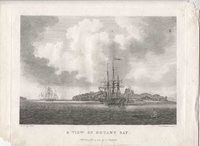 In 1250 AD, Egyptian paper-making technology reached Italy, where the manufacturing process was greatly improved – and the fine quality of Italian papers has been renowned ever since. Between 1338 and 1470, to make paper more cheaply, French monks used water wheels to power paper mills... and river runs of salmon were destroyed in the process.
In 1250 AD, Egyptian paper-making technology reached Italy, where the manufacturing process was greatly improved – and the fine quality of Italian papers has been renowned ever since. Between 1338 and 1470, to make paper more cheaply, French monks used water wheels to power paper mills... and river runs of salmon were destroyed in the process.
Paper will always vary in quality. Early antique prints were printed on hand-made paper. Some contain impurities. Other papers are now quite fragile. In fact, the composition of hand-made paper often assists us today in identifying the source and date of antique maps and prints.
Illustrations:
Gerarde's Herball fungi c1597
Mallet's Description of the Universe c1683
DeBry's Florilegium Novum c1612
Raphael's Vatican Loggia pilaster fresco c1776
Governor Phillip's Survey of New South Wales settlement in 1792. c1886
Phillip's View of Botany Bay engraving c1789
We no longer have an outlet in Brisbane. Visits to Antique Print Club in Neranwood are by appointment only: sales@antiqueprintclub.com / 0412 442 283